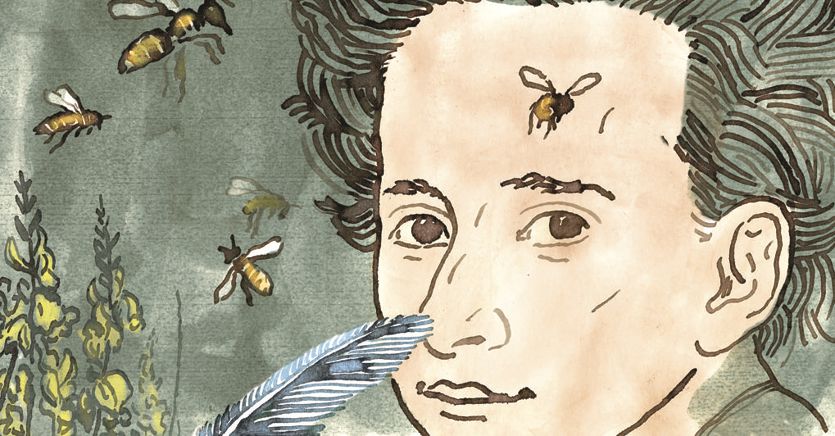What is a myrmicLion? How is the social life of bees organized? And what are petrifies? A fourteen-year-old boy browses and collects in a compendium the beautiful naturalistic encyclopedia of the Abbé Pluche, the fifth Italian edition of the Wonder of nature , printed in 1786 in Venice by Francesco di Niccolò Pezzana, in fourteen volumes and twelve volumes in 8 °, an editorial success in the France of the Enlightenment, published in 1732-50 and promptly translated into Italy, to find answers to his inexhaustible curiosities about the three kingdoms of nature, animal, plant and mineral. A boy, Giacomo Leopardi, who will leave an indelible mark on poetry, philosophy and culture throughout Italy and the world.
Notebook
The pages of the notebook, full of perfect calligraphic writing, arouse great emotion. And they bring Giacomo closer to those kids of all times who let themselves be attracted by the fascinating spectacle of nature. Giacomo found in the pages of the Pluche, which he summarized with extreme care and effective synthesis, those visions of nature that opened to him when he left his father’s palace, towards the countryside. Visions imprinted in his memory that became a source of poetic imagination and philosophical reflection throughout his life.
Loading…
But he also found descriptions, far from his experience, of exotic and fantastic creatures, such as the crocodile and the narwal, or of fanciful places where “gold dust” is found, such as the “gold coast of Guinea in the kingdom. of Sofala in Monomotapa, in Zanguelar in Abyssinia, in Brazil, and in Chilì ».
An unpublished Leopardian
The Compendium of Natural History was an unpublished Leopardian novel known to scholars, quoted by Giuseppe Cugnoni in the first volume of the Unpublished works published on Recanati autographs (1878-80) and reported inIndex of productions by me Giacomo Leopardi from the year 1809 onwards. The geologist Giulio Antonio Venzo had given detailed information in an essay from 1981.
When I introduced myself to Countess Anna Leopardi of San Leopardo on 24 June 2004 with a letter from my teacher Paolo Rossi who, as President of the Italian Society for the Study of the Relations between Science and Literature, pointed out how «it would be very important for culture Italian philosophical-scientific (and not only Italian) as well as for Leopardi studies the knowledge of this manuscript “, I received in reply a very kind, albeit affectionate,” at the moment we postpone “. We have waited almost twenty years, again asking Count Vanni to be able to see, study and publish the Compendium, until Valentina Sordoni’s perseverance convinced Countess Olimpia to consent to our curatorship for a critical edition that inaugurates the “Leopardiana” series published by Edizioni Mimesis. In this story we were able to appreciate the love for Giacomo of his descendants and of those who took care of the library and archive of Casa Leopardi, Carmela Magri and Arianna Franceschini. A love expressed by Countess Olimpia with the opening to the public of the “quiet rooms” of the palace where Giacomo, together with Carlo and Paolina, “lived[ò] child »(see« Il Sole 24 Ore Sunday »of 21 June 2020). And which now allows you to read precious pages of a “fabulous” young man, immersed in the spectacle of nature.
